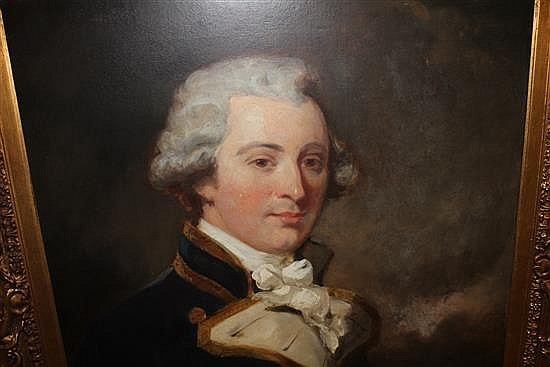About Publications Library Archives
heritagepost.org

Preserving Revolutionary & Civil War History

Preserving Revolutionary & Civil War History

Samuel Graves was born into a distinguished naval family. he married Elizabeth Sedgwick, daughter of John Sedgwick of Staindrop (County Durham). After Elizabeth’s death in 1767 he married again in 1769, his second wife being Margaret Spinkes, daughter of Elmer Spinkes of Aldwinkle in Northamptonshire, and an elder sister of Elizabeth Simcoe. He had no children, just a ward (daughter of his late sister-in-law) who married his godson John Graves Simcoe, who later became first Governor General of Upper Canada. He was the uncle of Admiral Thomas Graves, 1st Baron Graves, who was a first cousin of Rear-Admiral Sir Thomas Graves. Graves died at his estate at Hembury Fort, Honiton, Devon.
In 1756 Graves rose to command the Duke. He commanded the Barfleur in Admiral Sir Edward Hawke’s 1757 expedition to Basque Roads. Two years later, Graves returned to command of the Duke, serving again under Hawke in the Battle of Quiberon Bay, 20 November 1759. He continued in command of the Duke until his promotion to rear admiral in October 1762.
In October 1770 Graves rose to vice admiral, and in July 1774 assumed command of the Royal Navy’s North American station. Graves’s orders were vague, his resources overstretched, and his task, in the words of the Dictionary of National Biography, “perhaps the most ungracious duty that has ever fallen to the lot of a naval officer.” According to his instructions, Graves was charged with supporting customs officials enforcing the various revenue and trade acts governing North American colonial trade within the empire, especially the Boston Port Act. With only twenty-six ships and over one-thousand miles of coastline from Nova Scotia to Florida to patrol, Graves’s task was Sisyphean.
Manning problems made the Royal Navy’s problems even more acute, thus forcing it to resort to press gangs in order to supplement the ships’ slender crews. Compounding the problem was the attitude and behavior of navy officers who did not recognize local authority and were more often contemptuous of local officials and sensitivities.
Headquartered in Boston, Graves was at the center of the Revolutionary turmoil in New England. His sailors manned the boats that ferried British soldiers across the Charles River en route to Concord on the night of 18 April 1775. Two months later, on 17 June 1775, his sailors again helped ferry troops, this time to the Charlestown Peninsula, while several of his ships provided fire support for the pyrrhic victory at Bunker Hill. During the Siege of Boston, Admiral Graves, on 6 October 1775, ordered Lt. Henry Mowatt, commanding the armed vessel Canceaux, to destroy seaports that were supporting the rebellion. Mowatt burned Falmouth (today’s Portland, Maine) on 18 October.
On 27 January 1776, V.Adm. Richard Viscount Howe succeeded Graves as commander-in-chief of the North American station. Graves returned to England without a command. In September 1777 he declined command of Plymouth, but indicated a desire to return to active duty. Graves advanced to admiral of the blue on 29 January 1778, admiral of the white on 8 April 1782, and died at his estate at Hembury Fort, Honiton, Devon on 8 March 1787.